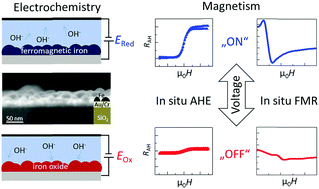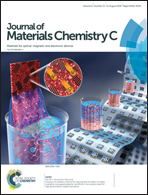All-electrochemical voltage-control of magnetization in metal oxide/metal nanoislands
Abstract
The great prospects for low-power magnetoelectronic devices trigger significant research activity aiming at voltage-control of magnetism. In this field, ion migration and reversible electrochemical reactions currently open a pathway to voltage-reprogrammable magnetic materials. Up to now, such electrochemical manipulation of oxide/metal heterostructures is mainly reported for thin films prepared by physical methods. The present study describes an all-electrochemical route by utilizing electrodeposited FeOx/Fe nanoislands as a starting state. Repeatable electrochemical conversion between ferromagnetic Fe and FeOx is achieved in KOH solution and exploited for voltage control of the magnetization of the nanoislands. For the smallest nanoislands, exhibiting dimensions of a few nanometers, almost complete voltage-induced ON/OFF switching of magnetism at room temperature is detected by in situ transport and ferromagnetic resonance measurements. The observed effects are enhanced in comparison to those of continuous films, which points at the morphology as an influencing factor of electrochemical voltage control of magnetism. The all-electrochemical approach is decisive for extending the application possibilities for voltage-programmable magnetic materials, because, by electrochemical deposition, geometry restrictions can be overcome and 3D structures can be functionalized.



 Please wait while we load your content...
Please wait while we load your content...